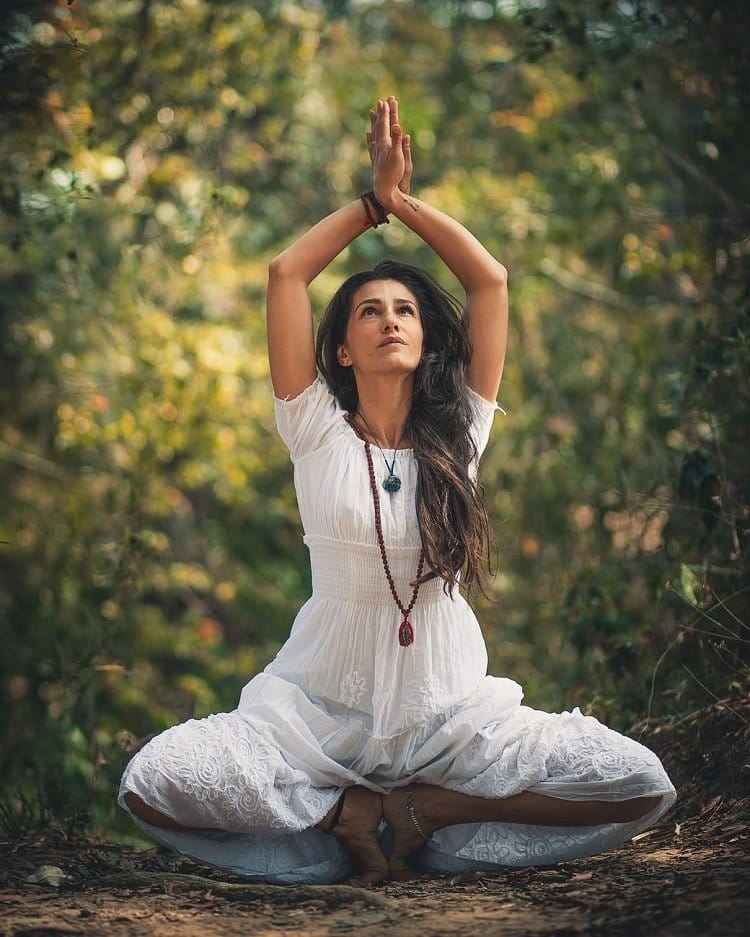The word ‘fitness’ often carries with it connotations of the bright lights, sweat, and noise of a bustling gym. Just the thought of this is enough to make most people tired enough to just want to curl up with a hot chocolate in front of the TV – especially after a long day at work. But fitness doesn’t have to be daunting. If you are getting stressed at the thought of exercising, you’re probably thinking about the wrong kind of fitness.
Increasingly, people are using Yoga as a way of combining relaxation with their weekly fitness routine. It’s cheap and easy, meaning that you can start as soon as you’ve finished reading this article. It also offers a range of health benefits including reducing blood pressure, lowering levels of anxiety and stress, and improving the strength of your heart. Sound too good to be true? Check this out for more details if you don’t believe it: Five Simple Chair Yoga Poses Anyone Can Do
If you want to benefit from some of the calming techniques offered by a frequent yoga routine, try out some of the yoga hacks below and watch yourself go from 60 to Zen in just a matter of minutes.

1) Breathing Back To Center
This is a classic technique and a nice easy one to get started with. The key to getting its benefits is posture – make sure you keep your shoulders down, in a relaxed position. If you’re thinking ‘I’m not relaxed enough’, you’re probably right. So, make sure you let all of the stress and negativity of your day ease out of you – close your eyes, perhaps, and think of the sound of the ocean.
Now you’re ready to get breathing back to center. Make sure to inhale slowly and very deeply. Once you have taken in all of that air, release it – but even slower than before. This method works best if you take twice as long to exhale as you took to inhale. This should be relaxing – if you’re struggling to breathe, you’re probably doing it the wrong way around.
Repeat this process until you are feeling centered. If you’re wondering what it means to be centered, it’s a sensation you can only really understand once you’ve reached it. One sure way of getting there is by breathing back to center. But, for those who need more rigid instructions, between 3 and 5 minutes is a good working estimate for this exercise. Just don’t stop if you aren’t yet feeling centered.
2) Ten Exhales
Have you ever been told to count to ten before reacting if you’re angry? Well, this isn’t just a cliché you see on TV – it actually works. This is because you’re mind needs something concrete on which to focus. If you are worried or angry about anything – be it work, bills, or even just something somebody has said to you – your mind focuses on this to a debilitating extent. This isn’t good for your health or peace of mind.
Using the ten exhales technique can seriously help to reduce stress and bring you into a state of near-perfect relaxation. In order to do this, simply breathe in for as long as you like before exhaling while saying (silently, to yourself) the number ‘10’. Repeat this process for the number ‘9’, then ‘8’ and so on, until you reach zero. If you don’t quite feel relaxed enough once this process is complete, simply start the process over again. By the time you’re done, you won’t even remember what you were angry or worried about in the first place.

3) Taking a Pause
This method works in a similar fashion to the ‘Ten Exhales’ technique above. It’s great for relieving stress by giving your mind something to focus on in the present moment. This one is all about the break between the inhale step and the exhale step. Simply breathe in, then take a pause. Then breathe out and take another pause. Your mind will stay focused on your breathing and its regular pattern will break the anxious cycle into which your mind has run.
This method, like the two preceding it, works by focusing you on your breathing. But surely, you must be thinking, there is more than just breathing techniques? You’d be right. There is mindfulness.
4) Mindfulness – Physical
You may have heard a lot of talk about mindfulness recently without really knowing what it is. It can be easy to dismiss it as just a fad, but it has been shown to work in much the same way that the above breathing techniques work to reduce anxiety and stress. If you want to reap all of the many health benefits offered by a regular yoga routine, mindfulness will constitute a central aspect of your program.
There are two main types of mindfulness. The first is physical mindfulness. The idea behind this method is once again getting your mind to focus on something apart from whatever thoughts have caused you to become stressed. Here, the idea is to focus on all of your body’s sensations, rather than just your breathing. It’s all about being as present as possible – feel the sensation of the ground on which you are resting, the wind brushing past your face, the sounds of the environment around you.
This method isn’t just about setting aside a moment during which to be hyperaware of your surroundings. This is a doctrine to abide by at all times – even during processes as simple as making your morning slice of toast.
5) Mindfulness – Mantra
As you may have learned by reading the above, repetition can be essential to a relaxing yoga routine. This repetition doesn’t just have to be confined to breathing techniques, however. Mantra mindfulness is all about repeating a phrase to yourself as a means of meditation. The beauty of this method is that you are able to pick the phrase you repeat yourself. Whatever you find relaxing is more likely to succeed than something someone else may prescribe.
This method works best when it is synched with your breathing pattern. Think of this as a combination of all of the techniques mentioned above. Can’t get much more relaxing than that, right?
If you lose concentration on your mantra for a moment and a worrying thought pops into your head, it’s not something about which to be unduly concerned. Simply return to your mantra, whatever it may be, and feel those negative thoughts recede far into the distance. Ultimately, the art of relaxation is much like any other art – it requires a great deal of skill, practice, and patience in order to be perfected.

How Often Should I Do These Exercises?
How often to exercise is a question everyone has wondered about in their lives. It’s not always best to exercise every day, as people generally imagine. For high intensity exercises, the amount you should do depends very much on what your goals are. For more advice on this point, you can read more here: How Many Days per Week Should You Exercise?
However, the great thing about Yoga is that it is low intensity and high reward. This means that, the more often you do it, the better. So, if you want to begin reaping those health benefits straight away, stop reading and get started right now.
Author: Chloe Bennet is a health blogger at Dissertation Writing Services, academic educational website that provides paper help.

